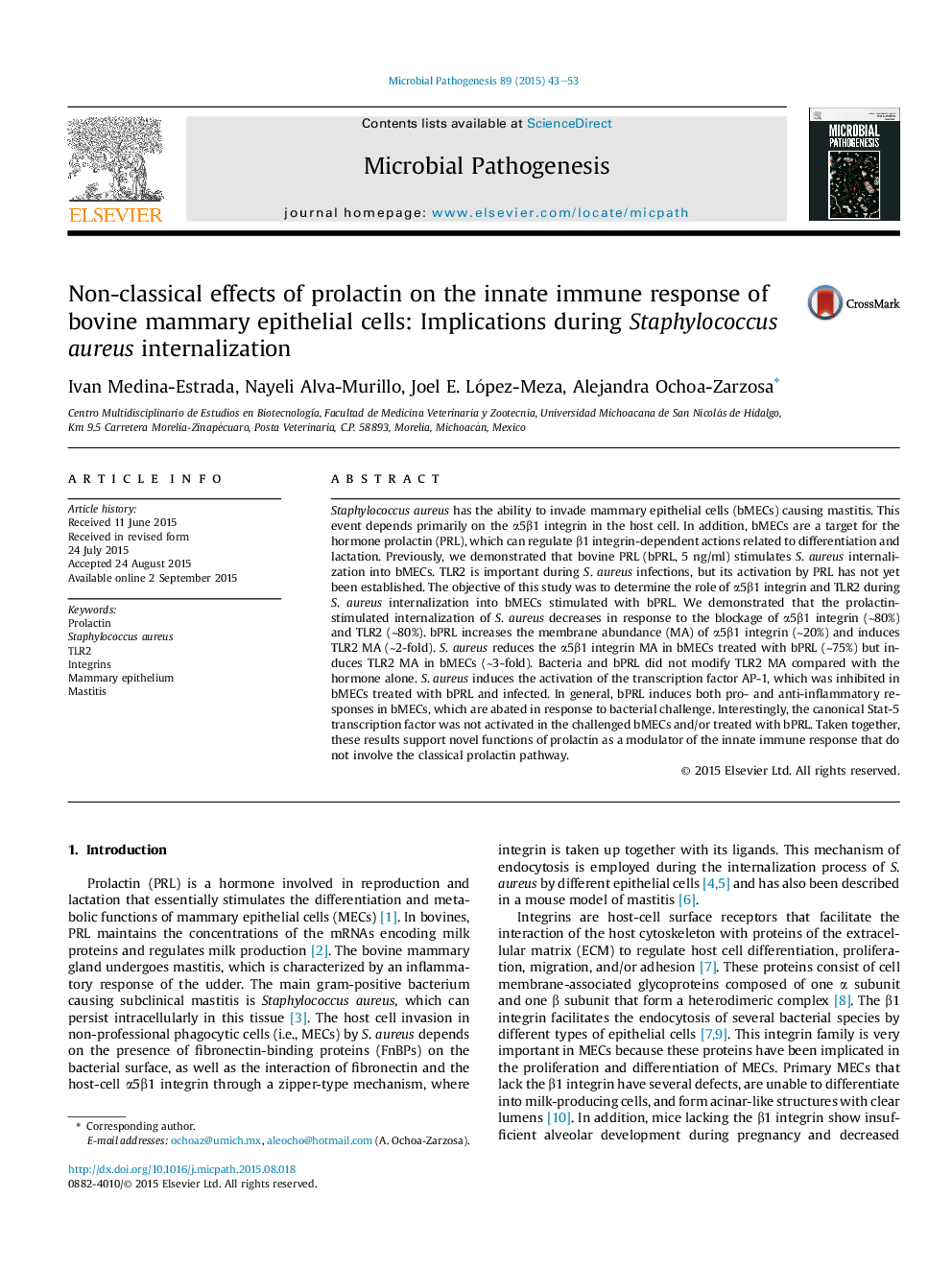| کد مقاله | کد نشریه | سال انتشار | مقاله انگلیسی | نسخه تمام متن |
|---|---|---|---|---|
| 3416442 | 1593700 | 2015 | 11 صفحه PDF | دانلود رایگان |
• Prolactin induces Staphylococcus aureus internalization into mammary cells.
• Prolactin-stimulated internalization of S. aureus depends on the α5β1 integrin.
• Prolactin stimulates TLR2 membrane abundance and AP-1 in mammary cells.
• The inflammatory response induced by prolactin is inhibited with S. aureus.
Staphylococcus aureus has the ability to invade mammary epithelial cells (bMECs) causing mastitis. This event depends primarily on the α5β1 integrin in the host cell. In addition, bMECs are a target for the hormone prolactin (PRL), which can regulate β1 integrin-dependent actions related to differentiation and lactation. Previously, we demonstrated that bovine PRL (bPRL, 5 ng/ml) stimulates S. aureus internalization into bMECs. TLR2 is important during S. aureus infections, but its activation by PRL has not yet been established. The objective of this study was to determine the role of α5β1 integrin and TLR2 during S. aureus internalization into bMECs stimulated with bPRL. We demonstrated that the prolactin-stimulated internalization of S. aureus decreases in response to the blockage of α5β1 integrin (∼80%) and TLR2 (∼80%). bPRL increases the membrane abundance (MA) of α5β1 integrin (∼20%) and induces TLR2 MA (∼2-fold). S. aureus reduces the α5β1 integrin MA in bMECs treated with bPRL (∼75%) but induces TLR2 MA in bMECs (∼3-fold). Bacteria and bPRL did not modify TLR2 MA compared with the hormone alone. S. aureus induces the activation of the transcription factor AP-1, which was inhibited in bMECs treated with bPRL and infected. In general, bPRL induces both pro- and anti-inflammatory responses in bMECs, which are abated in response to bacterial challenge. Interestingly, the canonical Stat-5 transcription factor was not activated in the challenged bMECs and/or treated with bPRL. Taken together, these results support novel functions of prolactin as a modulator of the innate immune response that do not involve the classical prolactin pathway.
Journal: Microbial Pathogenesis - Volume 89, December 2015, Pages 43–53
